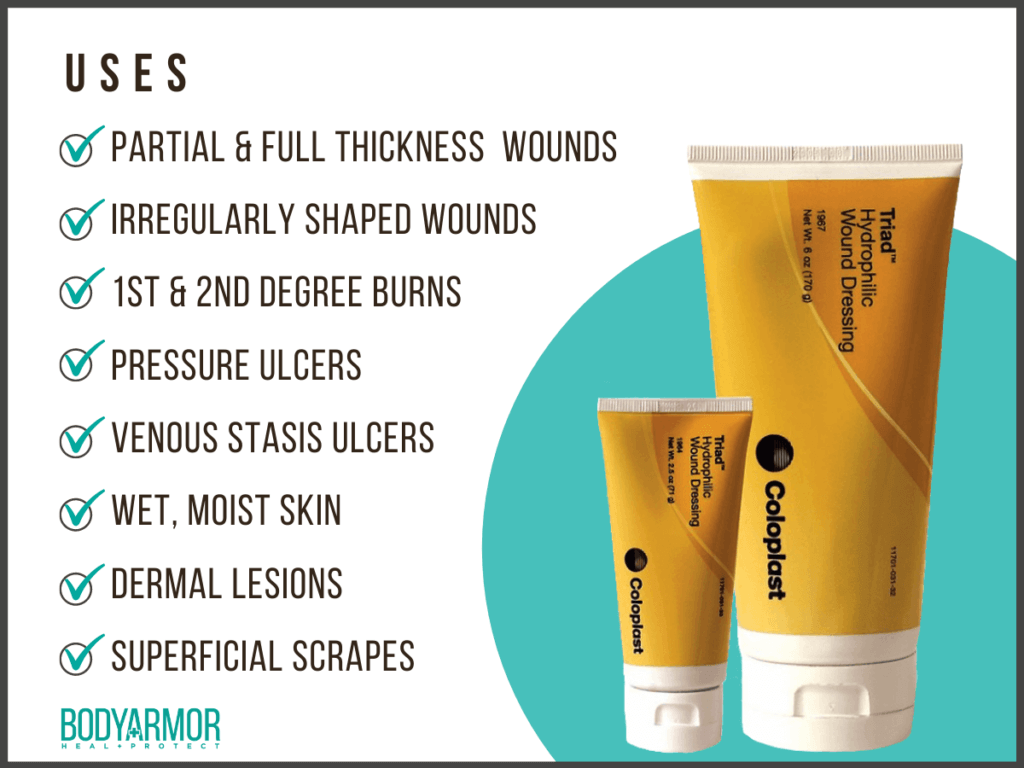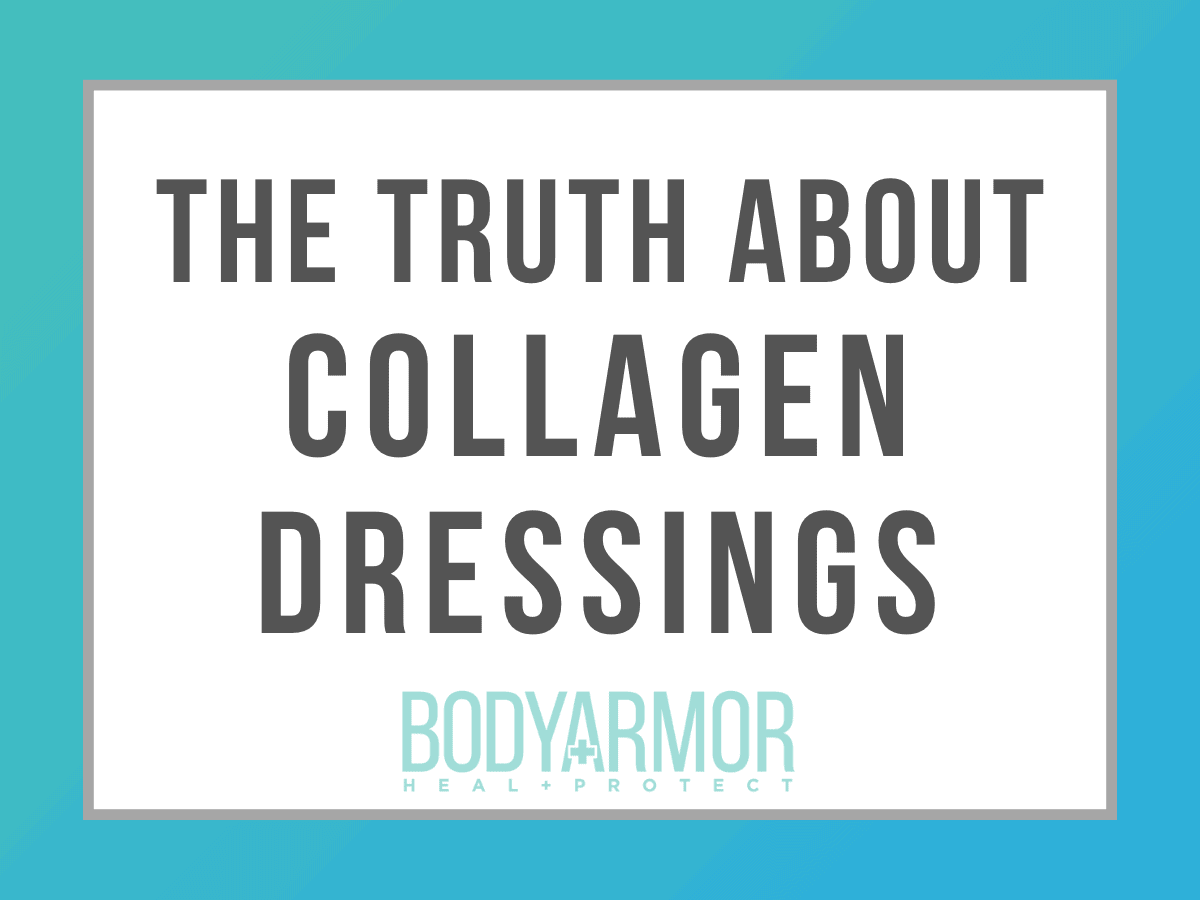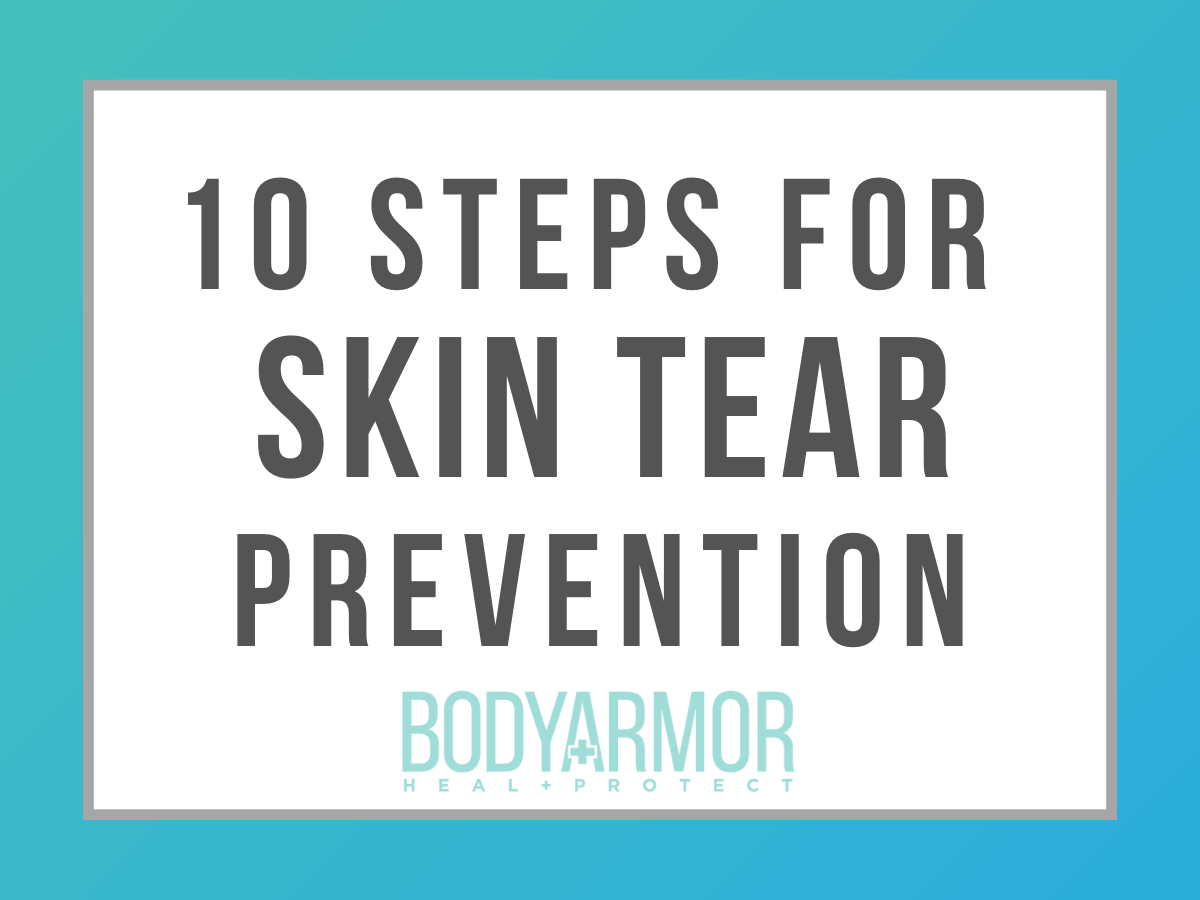
Irregularly shaped, wet, and hard-to-dress wounds are some of the biggest challenges in wound care. If you need to heal tricky wounds like these, at home or in a healthcare facility, it’s time to give Triad Hydrophilic Wound Dressing a try!
Benefits of Triad Hydrophilic Wound Dressing
Triad Hydrophilic Wound Dressing is not your average wound ointment. This advanced topical wound dressing features a preservative and latex-free formulation of powerful healing ingredients: carboxymethyl cellulose (CMC), dimethicone, petrolatum, and zinc oxide.
This unique blend creates a paste that:
- adheres to wet and moist skin (even weeping or macerated periwound)
- absorbs light to moderate levels of wound fluid and debris
- moisturizes while protecting skin from irritation
- will not harm or damage healthy tissue
- protects wound from bacteria and other environmental contaminants
- promotes a moist healing environment to support autolytic debridement
- is specifically designed to support the body’s natural healing process

While other topical ointments can leave wounds saturated, dried out, or require many re-applications…the hydrophilic properties of this innovative paste allow it to spread evenly over the wound surface, balancing moisture levels and remaining in place until removed.
And because it’s occlusive, Triad Hydrophilic Wound Dressing also helps reduce the risk of infection by blocking bacteria and other contaminants from contact with the wound.
Which Wounds Can Benefit from Triad?
Triad can be used on partial and full-thickness wounds, including:
- pressure ulcers
- minor burns
- dermal lesions
- venous stasis ulcers
- moist skin
- macerated periwound
- superficial scrapes
- MASD

Triad should not be applied to severe (third degree) burns or infected wounds.
How to apply Triad Hydrophilic Wound Dressing
For superficial wounds:
- Cleanse area with wound cleanser.
- Using a gloved finger, spread a dime-thick layer of Triad Hydrophilic Wound Dressing over the area.
- Usually, a secondary dressing is not needed. However, to prevent staining, a piece of dry gauze may be placed on top of the paste.
For wounds with depth:
- Cleanse area with wound cleanser.
- Impregnate sterile gauze with Triad Hydrophilic Wound Dressing.
- Loosely pack impregnated gauze into wound, ensuring good contact with wound surface and filling any spaces with tunneling or undermining.
- Cover the wound with an appropriate secondary dressing, such as Bordered Gauze, Silicone Absorbent, or Bordered Foam.
This versatile topical wound paste can be left in place for up to 5-7 days depending on levels of wound drainage.
How to Remove Triad Hydrophilic Wound Dressing
- If in place, remove gauze or secondary dressing.
- Spray the wound and periwound with wound cleanser, then use gauze to gently wipe the area. To prevent trauma to fragile, healing tissues, do not use a rough or scrubbing motion.
- Repeat as needed until all paste has been removed.
To ensure complete removal of the paste, Triad should only be cleansed using a pH-balanced wound cleanser-not with saline.
Where to Buy Triad Wound Dressing Online
This advanced topical wound dressing is an essential tool for anyone with stubborn or hard-to-dress wounds.
Click here to order your Triad Hydrophilic Wound Dressing today!







